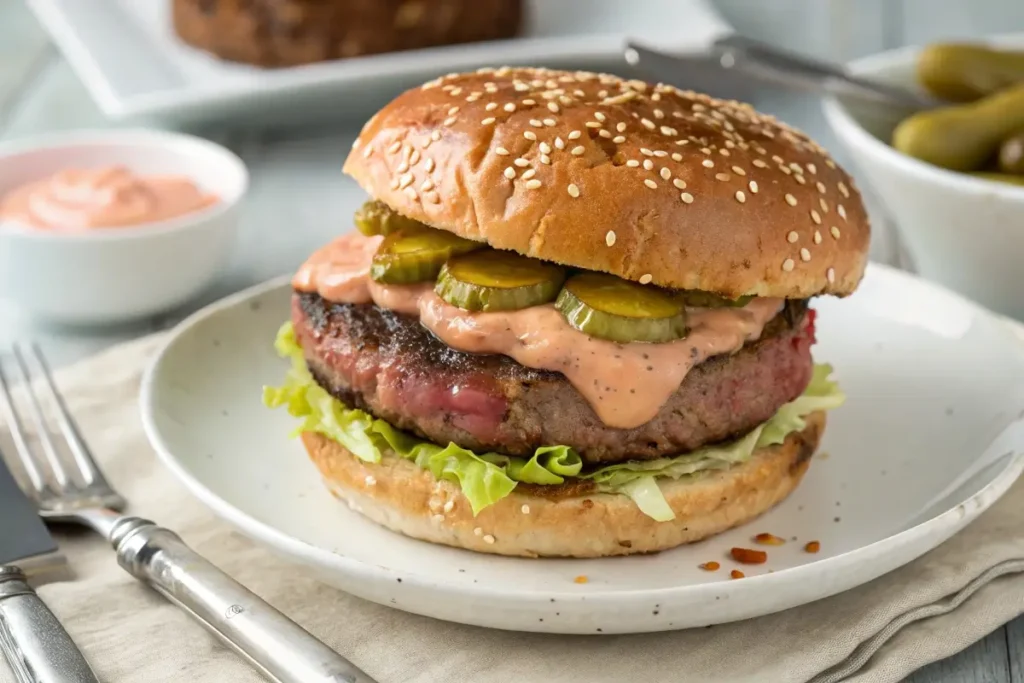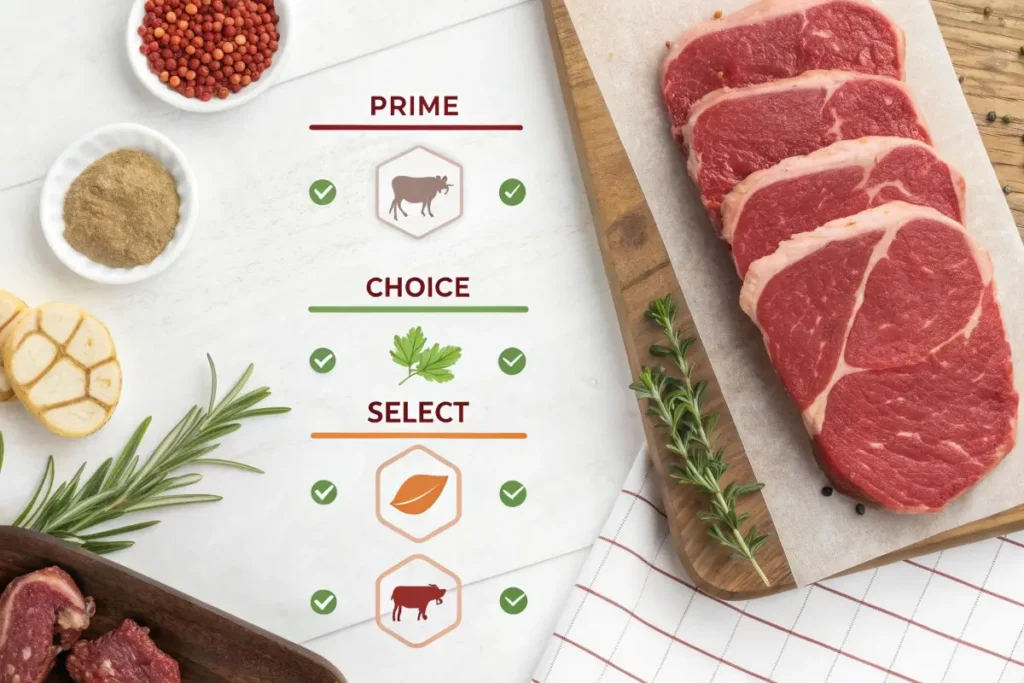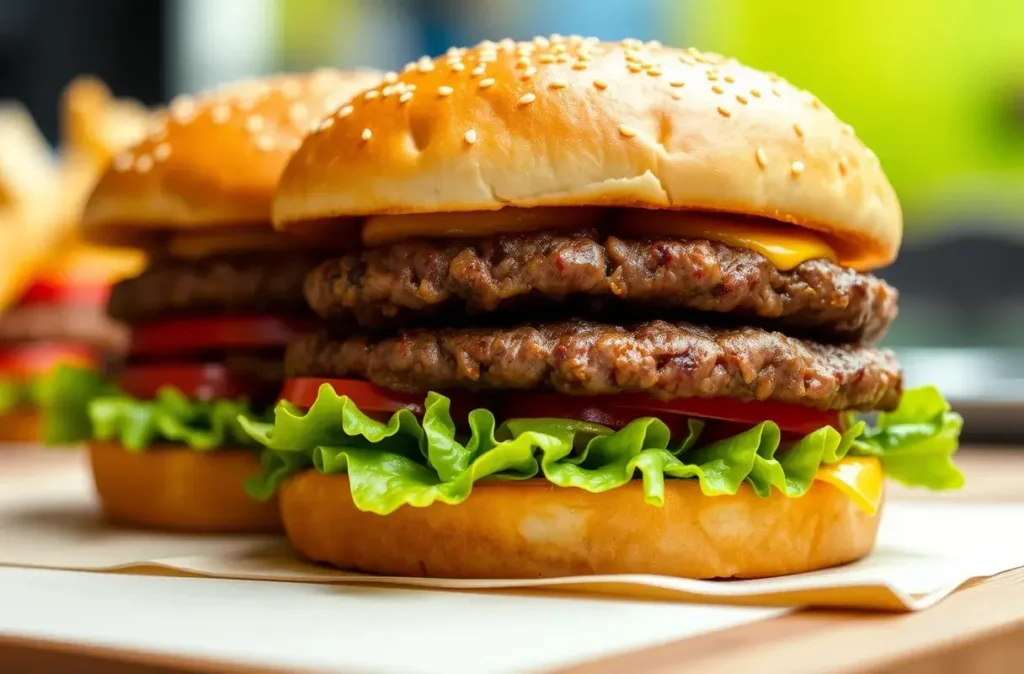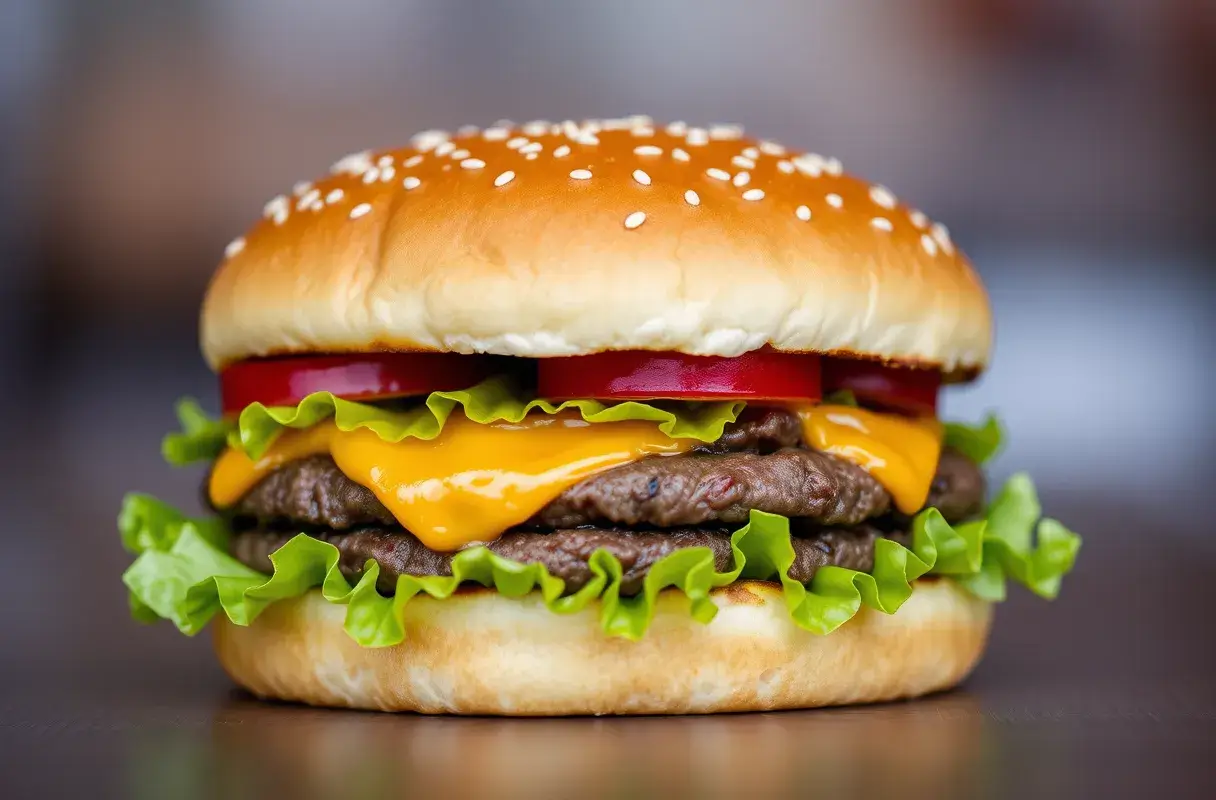The Big Mac is a cultural icon, instantly recognizable by its signature three-layer bun and special sauce. Still, many people wonder about its real composition. Is the Big Mac 100% beef? This article takes a deep dive into the question. We will look at the beef content, other key ingredients, and the standards McDonald’s follows to ensure quality. By the end, you’ll know exactly what you’re biting into and how this legendary sandwich fits into your diet.
Introduction
The Big Mac stands as one of the most iconic fast-food items worldwide. Its unique flavor, distinctive bun structure, and carefully balanced ingredients have made it a staple in over 100 countries. However, a pressing question often arises among curious diners: Is the Big Mac 100% beef? Understanding the truth behind its meat content, as well as the sandwich’s overall composition, can provide valuable insight for those who prioritize transparency, health, and quality. Whether you’re just curious about what’s in your burger or exploring ways to make informed dietary decisions, this article lays it all out.
What’s in the Big Mac: Unpacking the Ingredients
The Big Mac’s global fame stems not just from marketing, but from the harmony of flavors it delivers. At its core, it’s a multilayered construction of beef, sauce, veggies, cheese, and a distinctive triple-decker bun.
The Beef Patties: Are They Really 100% Beef?
McDonald’s claims its Big Mac patties are crafted using 100% beef. This means the patties are made from cuts like chuck, round, and sirloin, ground and formed into thin, uniform patties. According to the company’s statements, there are no extenders, fillers, or artificial preservatives added. They season these patties simply with salt and pepper during the cooking process, ensuring the beef itself remains the star of the show.
By focusing on these specific cuts, McDonald’s aims to maintain a consistent flavor profile. The relatively lean-to-fat ratio in these cuts provides a balance between tenderness and juiciness. The brand’s commitment to using only pure beef in the patties is part of their promise to consumers seeking a straightforward, recognizable product.
Other Ingredients
Of course, the Big Mac is more than just beef. Its ingredient list includes:
- Big Mac Sauce: A signature blend that combines mayonnaise, relish, mustard, vinegar, and spices. This sauce imparts a tangy, slightly sweet flavor that complements the savory beef.
- Pickles: These add a refreshing crunch and acidity, cutting through the richness of the meat and sauce.
- Lettuce: Shredded iceberg lettuce provides crisp texture and a mild taste.
- Cheese: A slice of processed American cheese adds creaminess and a hint of salt.
- Sesame Seed Bun: The three-layered bun, with sesame seeds on top, holds the entire creation together and adds a subtle nutty note.
- Onions: Diced onions bring extra flavor depth and gentle sharpness to each bite.
Together, these elements create that signature Big Mac taste that people have grown to love over decades.
Hidden Ingredients in the Big Mac Sauce
The Big Mac Sauce has achieved a legendary status of its own. While McDonald’s keeps the exact recipe under wraps, the known components include:
- Sweet Pickle Relish: Provides sweetness and a subtle tang.
- Distilled Vinegar: Contributes acidity to balance the richness.
- Paprika and Turmeric: Add natural color and a slight warmth.
- Preservatives: Ensure consistent flavor and shelf life.
These ingredients yield a sauce that is both familiar and distinctive, setting the Big Mac apart from other burgers on the menu.
Are There Regional Variations in Big Mac Ingredients?
McDonald’s tailors its menu to local palates around the world, and the Big Mac is no exception. While the core concept usually remains similar, small changes may occur to suit regional tastes.
- In India: The “Maharaja Mac” uses chicken patties instead of beef, respecting cultural preferences and dietary restrictions.
- In Certain Countries: Local toppings or sauces might be integrated. For instance, some regions may offer a spicier sauce or add ingredients like beetroot.
These variations ensure that while the Big Mac remains a global icon, it can still feel relevant and appealing to a diverse array of customers.
Is the Beef Really 100% Beef in the Big Mac?

Understanding the Claim: What Does 100% Beef Mean?
When McDonald’s says their Big Mac uses 100% beef patties, they are emphasizing that the patties contain only beef—no fillers, no soy additives, no artificial binders. The entire patty is sourced from legitimate cuts of beef, ground and formed into patties. This claim addresses long-standing rumors and misunderstandings about fast-food burgers. The label “100% beef” applies strictly to the patty itself, not the entire sandwich.
How McDonald’s Prepares Its 100% Beef Patties
The beef patties are seasoned only with salt and pepper. This simple approach lets the natural beef flavor shine through. Afterward, they are cooked on a flat-top grill. This method locks in juices and creates a nice sear, enhancing the patties’ aroma and taste. By controlling the cooking process closely, McDonald’s aims to ensure a consistent burger experience whether you’re ordering in New York, Tokyo, or Madrid.
Concerns About “100% Beef”
Some skeptics argue that the term “100% beef” can be ambiguous, but industry standards are fairly clear. The claim indicates that no other proteins or filler ingredients, such as cereal grains, are used. While the entire Big Mac beef content includes many components, the core beef patties remain free of non-beef additives. For those worried about misleading marketing, independent audits and transparent ingredient lists help verify these claims.
Sustainability of Beef Sourcing
McDonald’s often highlights its commitment to responsible sourcing. The beef industry can have significant environmental and ethical implications, so McDonald’s works with suppliers adhering to:
- Sustainable Farming Practices: Managing land responsibly, reducing greenhouse gas emissions, and preserving water resources.
- Animal Welfare Standards: Ensuring humane treatment of cattle throughout their lives.
- Traceability: Being able to track the origin of the beef to maintain standards and respond to any safety concerns quickly.
By doing so, McDonald’s attempts to reassure customers that the phrase “100% beef” not only describes the content of the patty but also reflects a broader commitment to quality and responsibility.
Beef Quality Standards

Quality control is integral to maintaining a consistent Big Mac experience worldwide. McDonald’s enforces rigorous checks on:
- Fat-to-Lean Ratio: Ensuring the patty isn’t too lean (leading to dryness) or too fatty (making it greasy).
- Grinding and Shaping: Uniform patties ensure even cooking and a predictable bite.
- Food Safety: Strict handling procedures from slaughterhouse to restaurant minimize contamination risks, aligning with global food safety standards.
These measures ensure that the Big Mac you enjoy today tastes very much like one you might have eaten decades ago, or in a different country.
Nutritional Profile of the Big Mac
A Big Mac weighs in at around 550 calories. Its macronutrient breakdown looks something like this:
- Calories: ~550 per sandwich
- Protein: ~25g
- Carbohydrates: ~46g
- Fat: ~30g
Beyond these basics, the Big Mac offers various micronutrients. The beef contributes iron and zinc, while lettuce provides some vitamins and cheese contributes calcium. However, the sodium and saturated fat contents raise flags for those watching their intake.
Health Considerations
- Saturated Fat: With about 10g of saturated fat, the Big Mac clocks in at around 50% of the recommended daily limit for many adults. Excessive saturated fat intake can impact heart health over time.
- Sodium: At approximately 1,010mg, the sodium level represents about 44% of a recommended daily intake of 2,300mg. High sodium can raise blood pressure, increasing cardiovascular risk.
- Essential Nutrients: The Big Mac provides iron, which supports oxygen transport in the blood, and a modest amount of calcium from the cheese.
How It Fits Into a Balanced Diet
The Big Mac can be part of a balanced diet if enjoyed in moderation. Consider pairing it with healthier sides and beverages:
- Side Salad Instead of Fries: This adds fiber and reduces overall calorie load.
- Water or Unsweetened Tea: Cutting out sugary drinks helps moderate sugar intake.
- Occasional Treat: Making it an infrequent indulgence rather than a daily habit maintains variety and balance in your overall eating pattern.
Allergen Information
The Big Mac contains common allergens:
- Gluten: Present in the bun.
- Dairy: In the cheese and sauce.
- Eggs: Part of the sauce’s mayonnaise base.
McDonald’s provides detailed allergen charts on their website and in restaurants. Customers with food sensitivities should review these carefully before ordering.
History of Big Mac beef content
Origins of the Big Mac: Who Invented It?
The Big Mac debuted in 1967, created by Jim Delligatti, a McDonald’s franchisee in Uniontown, Pennsylvania. He aimed to offer a more substantial burger than the basic hamburgers and cheeseburgers on the menu at the time.
Why It Became Iconic
A catchy jingle listing its components—”two all-beef patties, special sauce, lettuce, cheese, pickles, onions on a sesame seed bun”—catapulted the Big Mac into the public consciousness. This marketing genius, combined with its distinctive taste, made the Big Mac an instant hit.
Expansion Over the Years
By 1968, the Big Mac was available nationwide across the United States. As McDonald’s expanded globally, the Big Mac followed, adapting slightly to local tastes but remaining true to its fundamental identity.
Limited-Time Variations
Over the years, McDonald’s introduced special versions to keep interest high:
- Grand Mac: Features larger patties and more substantial buns for a heartier meal.
- Mac Jr.: A scaled-down version with fewer patties and calories for those seeking lighter fare.
These limited-time releases and variations highlight the Big Mac’s enduring popularity and cultural influence.

Frequently Asked Questions (FAQs)
Is there a triple Big Mac?
Yes, McDonald’s has introduced a Triple Big Mac in select regions. This version stacks three beef patties along with all the standard Big Mac fixings. However, the Triple Big Mac often appears as a limited-time offering or in specific markets, rather than a permanent menu option View Details
How unhealthy is a double Big Mac?
The Double Big Mac doubles the beef patties, resulting in a more indulgent nutritional profile. Approximately:
- Calories: ~720
- Fat: ~43g
- Sodium: ~1,380mg
These increases demand caution. While savoring a Double Big Mac occasionally won’t spell doom for your diet, relying on it frequently can tip you into excessive saturated fat and sodium territory. Balance this choice with lighter meals and healthier sides throughout the week View Details
Why is the Big Mac so expensive?
Pricing reflects multiple factors:
- Quality Ingredients: Sourcing reliable beef, fresh produce, and consistent sauce ingredients adds to costs.
- Labor Costs: Fair wages for employees and maintaining efficient kitchen operations.
- Economic Conditions: Transportation, supply chain complexities, and inflation also influence menu pricing.
Altogether, these factors contribute to the final price tag of a Big Mac View Details
How Does the Big Mac Compare to Other Burgers?
- Big Mac vs. Quarter Pounder: The Quarter Pounder centers on a single, thicker patty with fewer components, while the Big Mac’s signature sauce and layered structure create a different flavor experience.
- Big Mac vs. Whopper: Burger King’s Whopper is flame-grilled and often considered “simpler,” as it lacks a special sauce. It’s more customizable with toppings like tomatoes and mayonnaise.
- Big Mac vs. Homemade Burgers: Crafting a burger at home allows complete control over ingredients. You can choose leaner meats, whole-grain buns, and fresh vegetables, tailoring it to personal health and taste preferences.
Can You Customize Your Big Mac?
McDonald’s encourages customization. Customers can:
- Add or Remove Toppings: Extra pickles, no onions, or double cheese—your call.
- Lettuce Wrap Instead of Bun: For a lower-carb option, some locations offer swapping the bun for lettuce.
- Add Additional Patties: While not standard, you can sometimes request extra patties at an additional cost.
These adjustments let you fine-tune your Big Mac experience, adapting it to dietary needs or personal taste.
The Cultural Impact of the Big Mac: More Than Just a Burger
The Big Mac Index: An Economic Indicator
Introduced by The Economist in 1986, the Big Mac Index compares the price of a Big Mac across different countries as a measure of purchasing power parity. While not a perfect economic indicator, it’s a humorous and accessible way to gauge currency values worldwide.
Pop Culture References to the Big Mac
The Big Mac features prominently in films, TV shows, and music, symbolizing mainstream fast-food culture. Its name and format have inspired countless parodies, sketches, and social media discussions.
Charitable Contributions Linked to Big Mac Sales
During events like “McHappy Day,” a portion of Big Mac sales supports Ronald McDonald House Charities. This philanthropic angle weaves the Big Mac into community initiatives, linking a fast-food icon with efforts to help families in need.
Conclusion: Is the Big Mac 100% Beef?
Is the Big Mac 100% beef? Yes, when it comes to the patties themselves, McDonald’s uses pure beef without fillers, additives, or artificial preservatives. However, the sandwich as a whole involves a range of ingredients, including sauces, cheese, and veggies. While undeniably tasty, the Big Mac’s high calorie, saturated fat, and sodium content make it a treat best enjoyed in moderation.
Whether you embrace the Big Mac for its nostalgic charm or enjoy it occasionally as a comfort meal, knowing the facts helps you make informed decisions. By understanding what goes into this iconic burger, you can better appreciate its flavor, consider your nutritional goals, and relish the experience on your own terms.
